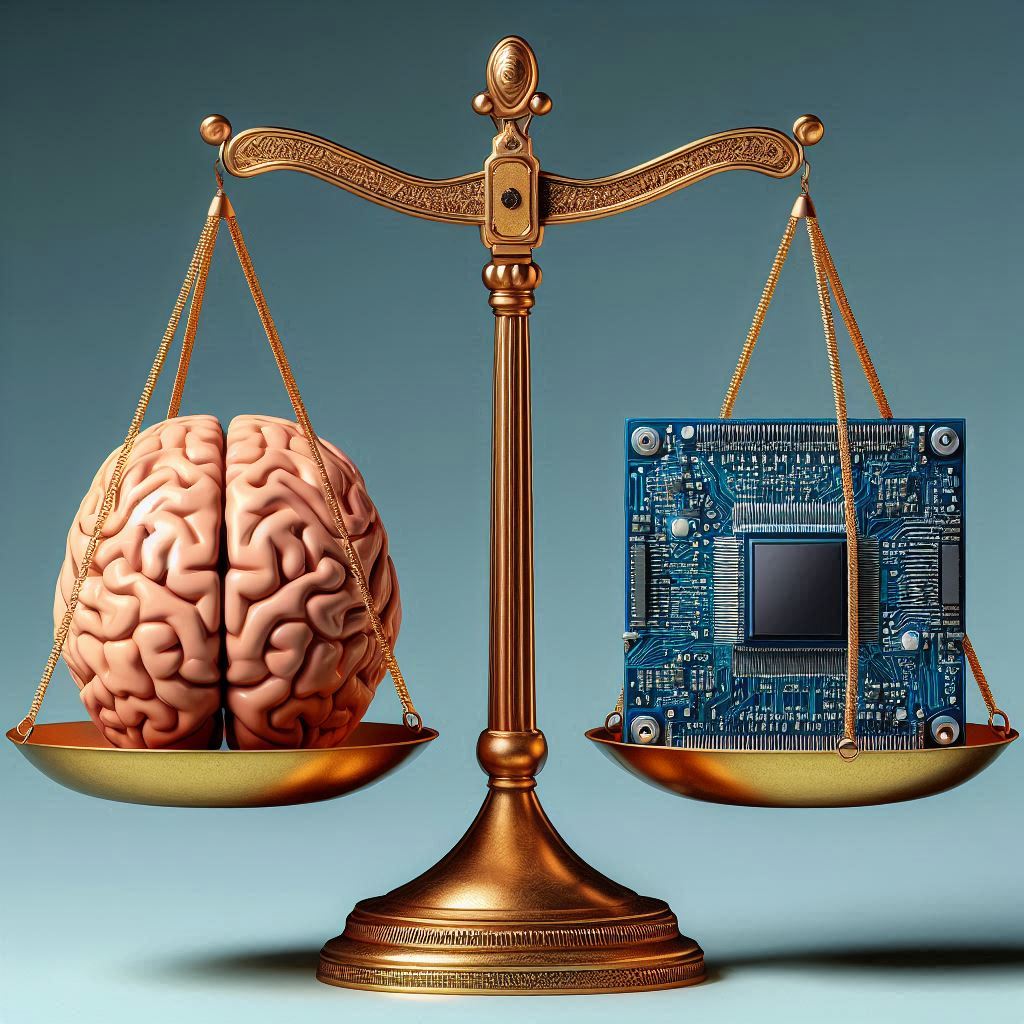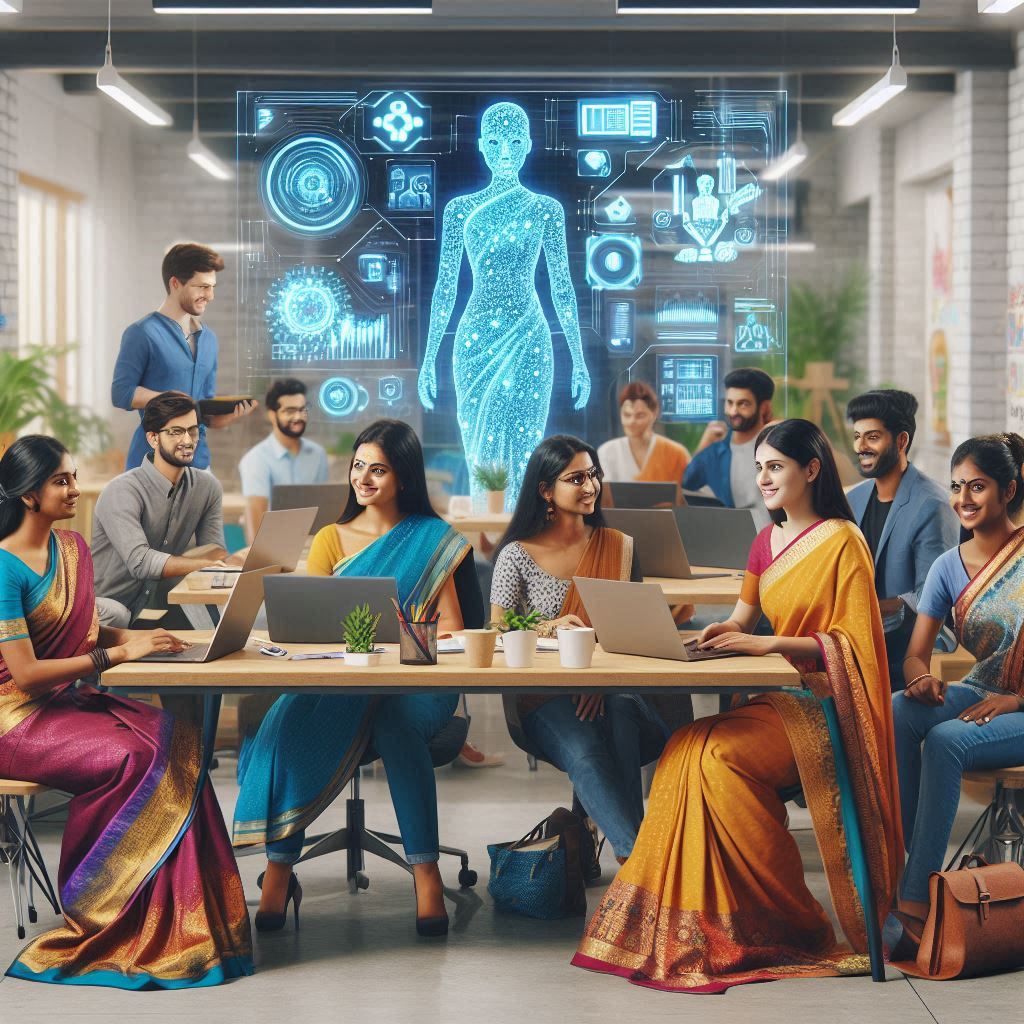Human Capital vs. Algorithmic Capital: Finding Harmony in Workplace Futures
As workplaces (not just the physical) evolve, the lines between human ingenuity and algorithmic precision are increasingly blurred. Human capital—the creativity, empathy, and problem-solving capabilities of people—is now complemented by algorithmic capital. The latter is a term that encapsulates the efficiencies and analytical power of artificial intelligence (AI). This dynamic interplay is reshaping how organizations operate, particularly in co-working environments where collaboration is paramount. So, our conversation today is about finding harmony, and balancing Human Capital vs. Algorithmic Capital in workplaces of today, and the future.
A McKinsey study (from 2024) highlights a staggering statistic: 45% of workplace tasks could be automated with existing technologies. The implications are profound. Organisations must execute a delicate balancing act, leveraging the strengths of humans and automation (essentially, algorithms) to achieve optimal outcomes. The question is no longer whether humans and algorithms can coexist in the workplace but how effectively businesses can harness their combined power.

The Rise of Human-AI Collaboration
The narrative around automation has long focused on fears of displacement, yet the reality emerging today tells a different story. Machines, rather than replacing human effort , are increasingly designed to enhance and extend it. In modern workplaces, especially co-working environments, this partnership is becoming the new norm. Data analysts, for instance, use AI tools to sift through vast datasets with remarkable speed, while retaining the critical role of interpreting nuanced patterns. Similarly, creative professionals integrate generative AI tools into their workflows, using technology to brainstorm or refine ideas but still relying on human intuition to produce resonant outputs. There, of course, are exceptions viz creative situations where repetitive work by humans can be summarily, and should be replaced by AI.
By 2027, Gartner projects that 70% of organizations will depend on human-AI collaboration as a cornerstone of their success. This highlights a transformative shift: the future workplace is destined to be one where humans and machines not only coexist but co-create. This also implies that the value realisation of such collaborative work, inherently, will be at a higher level.
The Challenges of Integration
Despite the promise of human-AI collaboration, the journey toward integration is rife with challenges. The first major hurdle is the digital skills gap. A 2023 PwC survey said that 42% of employees felt underprepared to use AI tools in their roles. As AI continues to penetrate workplaces, the need for targeted upskilling programs becomes urgent. It also has to be considered that the types of AI are rapidly evolving. Today, we are dealing with generative AI, and the imminent future will see us interacting with physical AI, thus needing a different type of upskilling.
Algorithmic bias, strengthened with training data and experiences, presents another significant challenge. AI systems are trained on historical data, which often carries the same biases that society seeks to overcome. For example, recruitment algorithms have been criticized for reinforcing gender and racial disparities due to biased training data. Organizations that implement AI tools without safeguards risk perpetuating these inequities, undermining trust and fairness in the workplace.
Finally, cultural resistance remains a persistent obstacle. Workers often perceive algorithmic systems as threats—not only to their roles but also to their sense of agency. Overcoming this requires a cultural shift, emphasizing the complementary roles of humans and machines. Having said that, part of the fear perhaps is real. There is no denying the potential for some job loss.
A Case Study: Finding Human Capital Vs Algorithmic Capital Balance at Netflix
Go to the end of the article for the case study
Building the Future: Strategies for Harmonization
The successful integration of human capital and algorithmic capital requires deliberate strategising. First, businesses must invest in continuous learning. Digital literacy programs, AI certifications, and partnerships with academic institutions can help bridge the skills gap, ensuring employees are prepared for evolving roles. Organizations like Microsoft and Google have already launched free AI training programs aimed at equipping workers with foundational knowledge. And, state bodies like the Government of India are making academic subscriptions free for its citizens.
Transparency is another cornerstone of harmonization. Explainable AI models, which provide clear insights into how decisions are made, build trust among employees and stakeholders. Regular audits, and published results, of AI systems to detect and address biases are equally important. When employees understand and trust the tools they use, resistance diminishes, and collaboration thrives.
Finally, fostering a culture of co-creation can unlock new possibilities. By involving employees in the selection and implementation of AI tools, organizations can create a sense of ownership. Collaborative workshops, where teams use AI tools to brainstorm and prototype solutions, exemplify how co-creation can lead to innovation.
Co-Working Spaces as Innovation Hubs
Co-working spaces are emerging as laboratories for human-AI collaboration. These environments are uniquely suited to experiment with innovations like smart workspaces, where AI systems adjust the work environment (including lighting, temperature, and desk allocations etc.) based on individual preferences. Virtual collaboration tools are also advancing, blending AR/VR technologies with AI to enable seamless global teamwork.
Personalized productivity tools represent yet another frontier. AI-powered dashboards, which provide tailored insights into performance and workflow optimization, are transforming how teams approach their work. With the global co-working market projected to grow at a 17% CAGR from 2023 to 2030, the potential for experimentation and innovation in these spaces is immense.

A Symbiotic Future
The interplay between human and algorithmic capital isn’t a zero-sum game but a symbiotic relationship that holds transformative potential. Addressing barriers such as skill gaps, algorithmic biases, and cultural resistance, organizations can create environments where creativity, efficiency, and innovation can flourish.
As the work environment continues to evolve, people and organizations who embrace this balance will lead the charge toward a future defined by collaboration and shared success. The question is no longer whether humans and algorithms can work together but how effectively they can shape the future together.
Case Study1: Netflix – Balancing Human Capital Vs. Algorithmic Capital
Netflix provides a fascinating real-world example of how human and algorithmic capital can work together to drive innovation and enhance user experiences. Known for its sophisticated recommendation algorithms, Netflix uses AI to analyze massive amounts of viewer data, predicting preferences and suggesting personalized content for its global audience. However, the human element in its operations remains equally critical.
The Algorithmic Side: Enhancing Personalization
Netflix’s recommendation engine accounts for 80% of the content viewed on the platform, according to a report by Wired. The AI model analyzes viewing habits, search queries, and even the time spent hovering over thumbnails to curate a unique experience for each user. This system has been instrumental in retaining subscribers, reducing churn, and driving engagement.
The Human Side: Creating Resonant Content
While AI powers recommendations, Netflix relies on human capital for content creation. Its data may suggest trends, but it is the creativity of writers, directors, and producers that shapes compelling narratives. Shows like Stranger Things and The Crown owe their success not to algorithms but to the storytelling prowess of their creators. Netflix’s ability to interpret AI-driven insights into actionable creative decisions demonstrates how the two forms of capital can coexist effectively.
The Balance in Action
Netflix also uses a hybrid approach in its marketing strategies. AI identifies target audiences for specific shows, predicting the best release times and platforms for promotional campaigns. However, the execution of these campaigns often involves human intuition, cultural sensitivity, and creativity to craft messages that resonate with diverse global audiences.
- The case study above is AI generated ↩︎